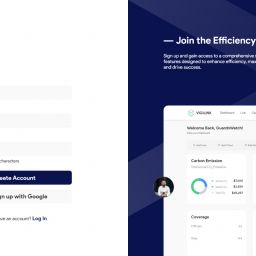How to Increase Workplace Productivity
Workplace productivity is crucial for the success of any organization. When employees are productive, tasks are completed efficiently, goals are achieved, and overall performance is enhanced. However, boosting productivity is not always easy. In this article, we will explore several strategies and best practices that can help increase workplace productivity.
1. Set Clear Goals and Priorities:
Clearly define the goals and objectives for individuals, teams, and the organization as a whole. When employees have a clear understanding of what they need to accomplish, they can focus their efforts on tasks that directly contribute to those goals. Prioritize tasks based on their importance and urgency to ensure that time and resources are allocated effectively.
2. Provide the Right Tools and Resources:
Equip employees with the necessary tools, equipment, and resources to perform their tasks efficiently. Outdated technology or inadequate resources can hinder productivity. Regularly assess the needs of your workforce and invest in tools and systems that streamline processes and enable employees to work more effectively.
3. Foster a Positive Work Environment:
Create a positive work environment that promotes engagement, collaboration, and employee well-being. When employees feel valued, supported, and motivated, they are more likely to be productive. Encourage open communication, recognize achievements, and provide opportunities for growth and development. Additionally, ensure that the physical workspace is comfortable, well-organized, and conducive to productivity.
4. Encourage Work-Life Balance:
Recognize the importance of work-life balance and support employees in maintaining it. Encourage breaks, vacations, and flexible working arrangements to prevent burnout and promote overall well-being. When employees feel refreshed and have time for personal activities, they can bring more focus and energy to their work, leading to increased productivity.
5. Implement Effective Time Management Strategies:
Effective time management is essential for productivity. Encourage employees to prioritize tasks, set realistic deadlines, and use time management techniques such as time blocking or the Pomodoro Technique. Limit distractions, encourage single-tasking, and promote the use of productivity tools and apps to help employees manage their time more effectively.
6. Promote Collaboration and Communication:
Create a collaborative work environment that encourages open communication and knowledge sharing. Foster teamwork and provide platforms for employees to collaborate on projects and share ideas. Effective collaboration minimizes duplication of efforts, improves problem-solving, and enhances overall productivity.
7. Provide Training and Development Opportunities:
Invest in employee training and development to enhance skills and knowledge. Continuous learning keeps employees engaged and motivated, while also equipping them with the tools to excel in their roles. Offering opportunities for professional growth and development shows that you value your employees and can significantly impact their productivity.
8. Streamline Processes and Eliminate Redundancy:
Regularly evaluate workflows and processes to identify inefficiencies and eliminate redundancy. Look for ways to automate repetitive tasks, simplify procedures, and streamline communication channels. By reducing unnecessary steps and simplifying processes, you can save time and increase productivity.
9. Set Realistic Deadlines and Manage Workloads:
Ensure that employees have realistic deadlines and manageable workloads. Overloading employees with excessive work can lead to stress, errors, and decreased productivity. Regularly assess workloads, provide support when needed, and be willing to adjust deadlines or redistribute tasks to maintain a healthy balance.
10. Monitor Progress and Provide Feedback:
Regularly monitor progress and provide constructive feedback to employees. Set up performance tracking systems and conduct regular check-ins to review progress towards goals. Celebrate achievements and address any performance issues promptly. Feedback allows employees to course-correct, learn from their mistakes, and continually improve their productivity.
Conclusion:
Increasing workplace productivity requires a holistic approach that encompasses clear goal-setting, resource allocation, a positive work environment, effective time management, collaboration, continuous learning, streamlined processes, workload management, and regular feedback. By implementing these strategies, organizations can create a culture of productivity, engagement, and success.
















